
Feel free to add tags, names, dates or anything you are looking for

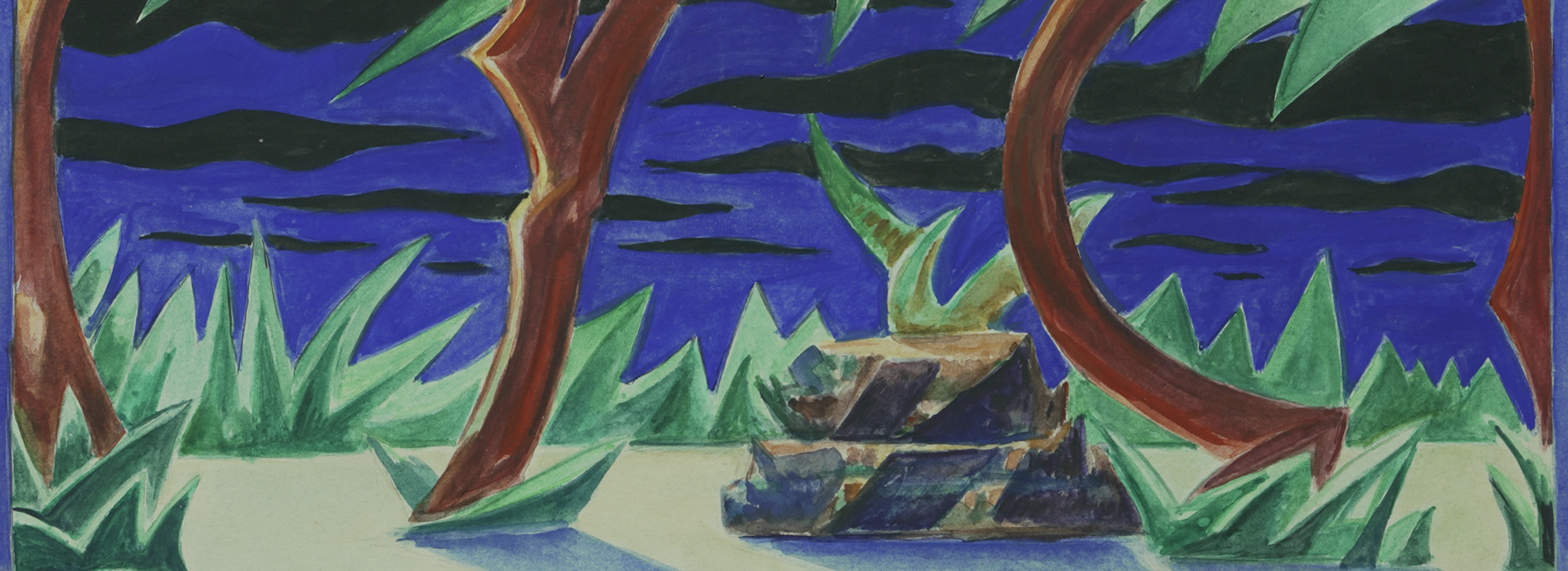
Irakli Gamrekeli (ირაკლი გამრეკელი, 1894-1943) was one of the founders of Georgian scenography and a prominent theater and cinema artist, futurist, and constructivist. Born on May 17, 1894, in Gori, Georgia, to a priest's family, he received his primary education at a theological school. Essentially a self-taught artist, he also spent time at the Medical Institutes in Rostov and Odessa, but failed to graduate, feeling that painting was his true calling.
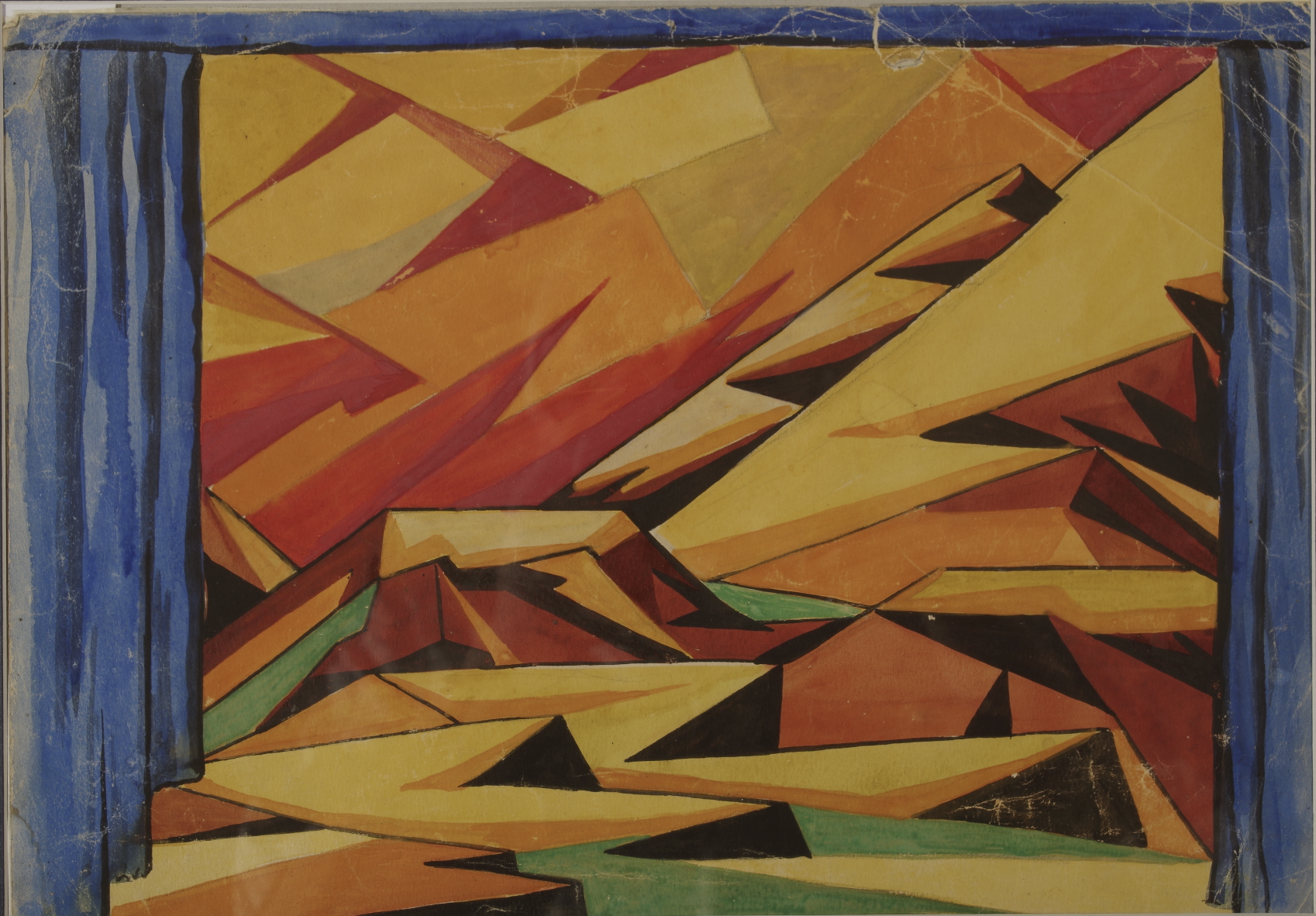
Irakli Gamrekeli. Stage design for "Londa” by Grigol Robakidze. 1923. Sh. Rustaveli Theatre, director Kote Marjanishvili. Gouache on paper. 25.5x35.5. Sh. Rustaveli Theatre Museum

Irakli Gamrekeli. Stage design for "Man and the Masses” by Ernst Toller. 1923. Sh. Rustaveli Theatre, directors Kote Marjanishvili & Mikheil Koreli. Gouache on paper. 19x22. Art Palace of Georgia - Museum of Cultural History

Irakli Gamrekeli. Stage design for "Man and the Masses” by Ernst Toller. 1923. Sh. Rustaveli Theatre, directors Kote Marjanishvili & Mikheil Koreli. Gouache on paper. 18x24. Art Palace of Georgia - Museum of Cultural History
Irakli Gamrekeli's first works were graphic illustrations for literary pieces. At the time, most likely he did not realize that he would soon become a stage designer. The compositions he created in 1921, based on Oscar Wilde's ‘Salome,’ feature figures that symbolically express intense inner emotions. His works combined elements of symbolism, Art Nouveau, and expressionism. It is no surprise, then, that theater director Kote Marjanishvili, who sought to modernize and establish expressionism in Georgian theater, took notice of Irakli Gamrekeli's work and, in 1922, invited him to join the theater. Gamrekeli’s meeting with Marjanishvili marked a turning point for him, and he began to focus primarily on creating theater decorations and designing costumes for actors, only rarely painting semi-abstract portraits.
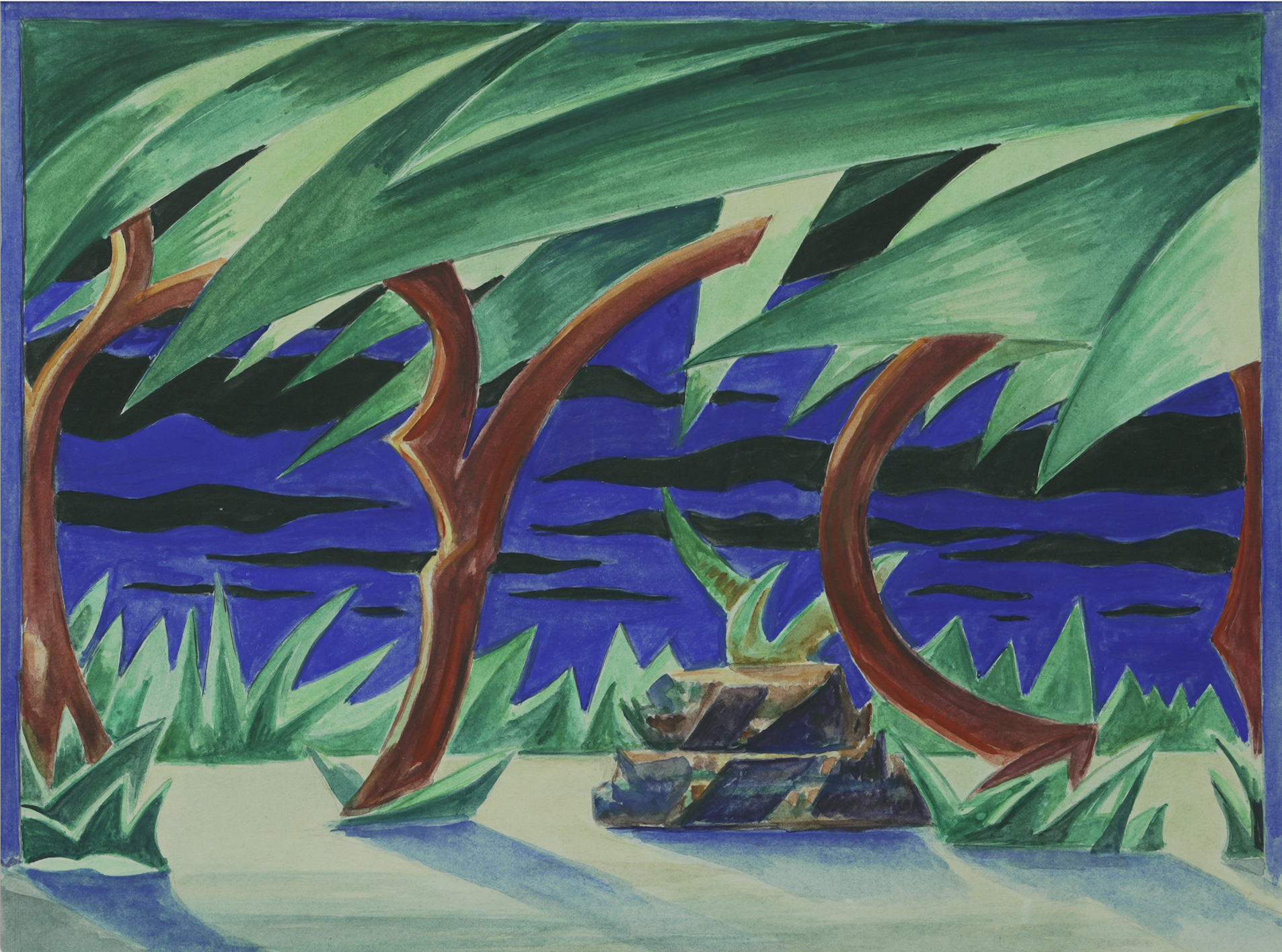
Irakli Gamrekeli. Stage design for "SPIEGELMENSCH” ("The Man in the Mirror") by Franz Werfel, 1924. Sh. Rustaveli Theatre, director Sandro Akhmeteli. Gouache on cardboard. 32x41. This work is part of ATINATI Private Collection
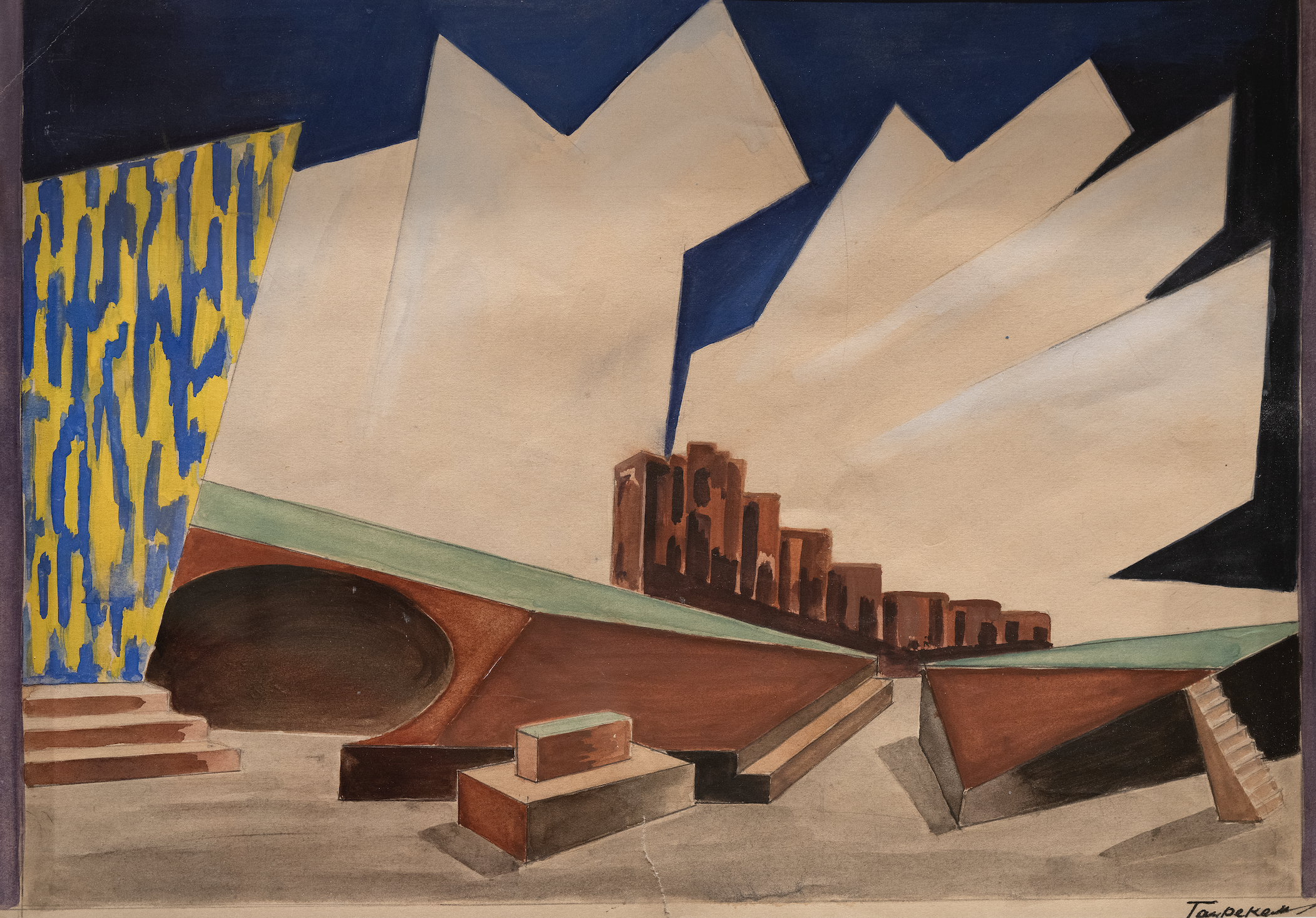
Irakli Gamrekeli. Stage design for "SPIEGELMENSCH” ("The Man in the Mirror") by Franz Werfel, 1924. Sh. Rustaveli Theatre, director Kote Marjanishvili. Pencil and watercolor on paper. 25,5x35,5. This work is part of ATINATI Private Collection
In his first theater work, a staging of Wilde's ‘Salome’ (1922), Gamrekeli brought his experience in expressionism to the stage. This experience was perfectly suited to the symbolic-expressionist plays of Grigol Robakidze, among them ‘Londa’ (1923) and ‘Maelstrom’ (1924; the latter in collaboration with Kiril Zdanevich). During those years, the rear "on duty" painting panels that made the backdrop of performances were chased out of theaters all over the world: rather than a flat decorative background, constructivist decorations began to be preferred, which needed not only to offer an environment that matched the action, but which could enable the actors to move freely in a more three-dimensional environment and tackle complex plastic tasks effectively. Such work required both spatial and architectural perception from the artist, seeing him having to create simultaneously an abstract and conditional atmosphere on stage.
In addition to the aforementioned tendencies, Gamrekeli understood cubism, cubo-futurism, and, most importantly, constructivism. He developed a distinctive style, taking into account the various trends. For both Marjanishvili and, later, Sandro Akhmeteli, Irakli Gamrekeli was an invaluable collaborator. He designed scenographic constructions that modified the stage to align with the play's themes, allowing them to emerge naturally from the content of the action.
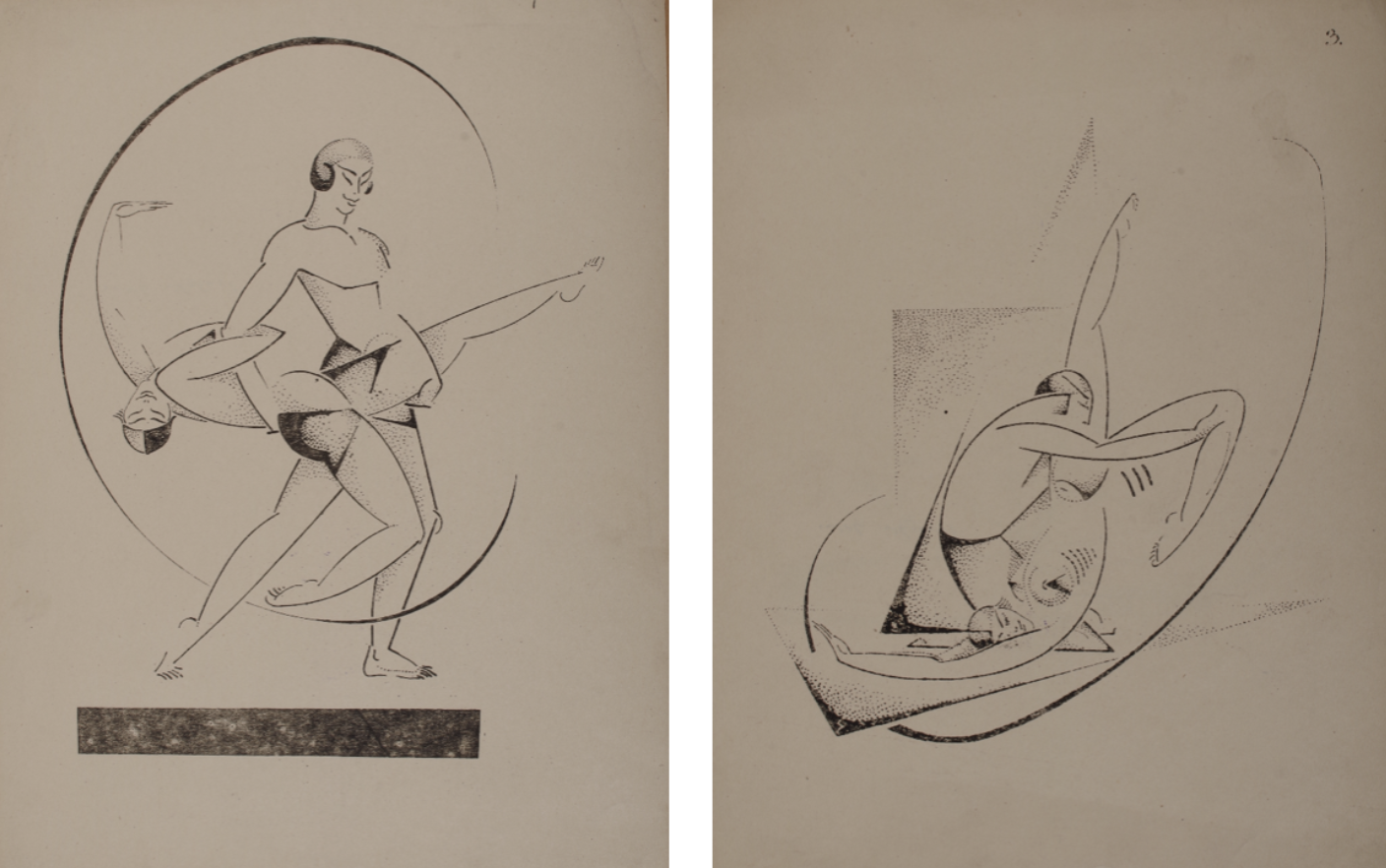
Irakli Gamrekeli. Two compositions from the series “Circus,” 1924. Lithograph, 26.5x19. Sh. Rustaveli Theatre Museum
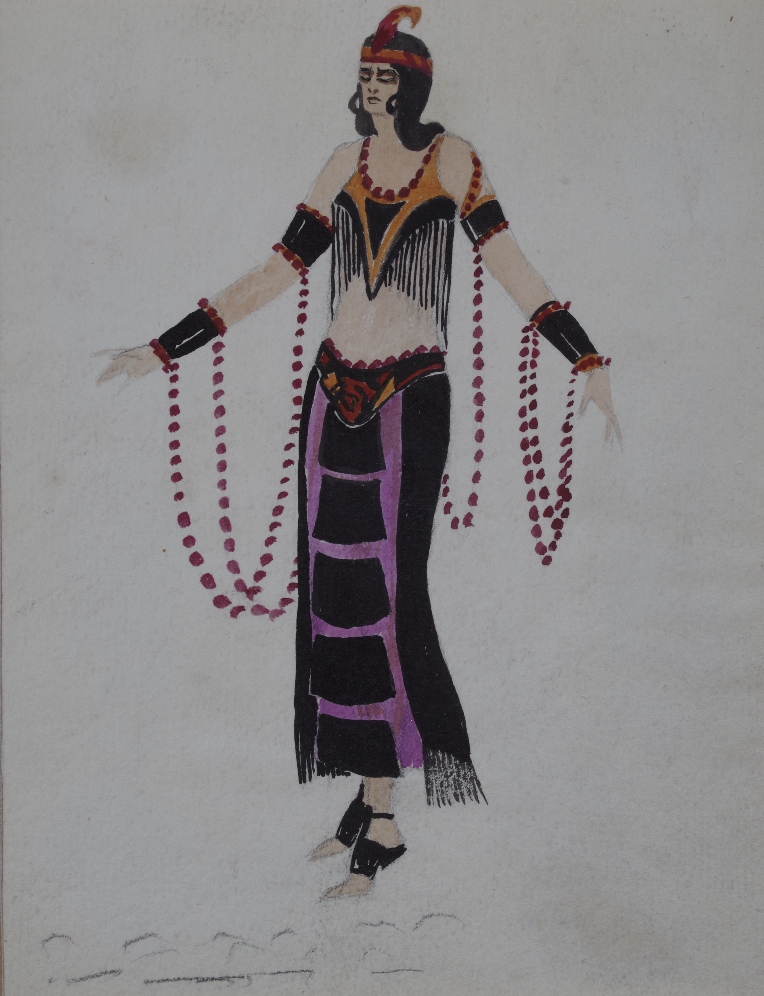
Irakli Gamrekeli. Costume design for "Zagmuk” by Anatoly Glebov. 1926. Sh. Rustaveli Theatre, director Kote Marjanishvili. Pencil and gouache on paper. 17x11

Irakli Gamrekeli. Stage design for "Jumah Masjid" by Georgi Venetsianov, 1928. Sh. Rustaveli Theatre, director Kukuri (Ivane) Paraidze. Watercolor and Indian ink on paper glued to cardboard. 29.5x40. Private Collection
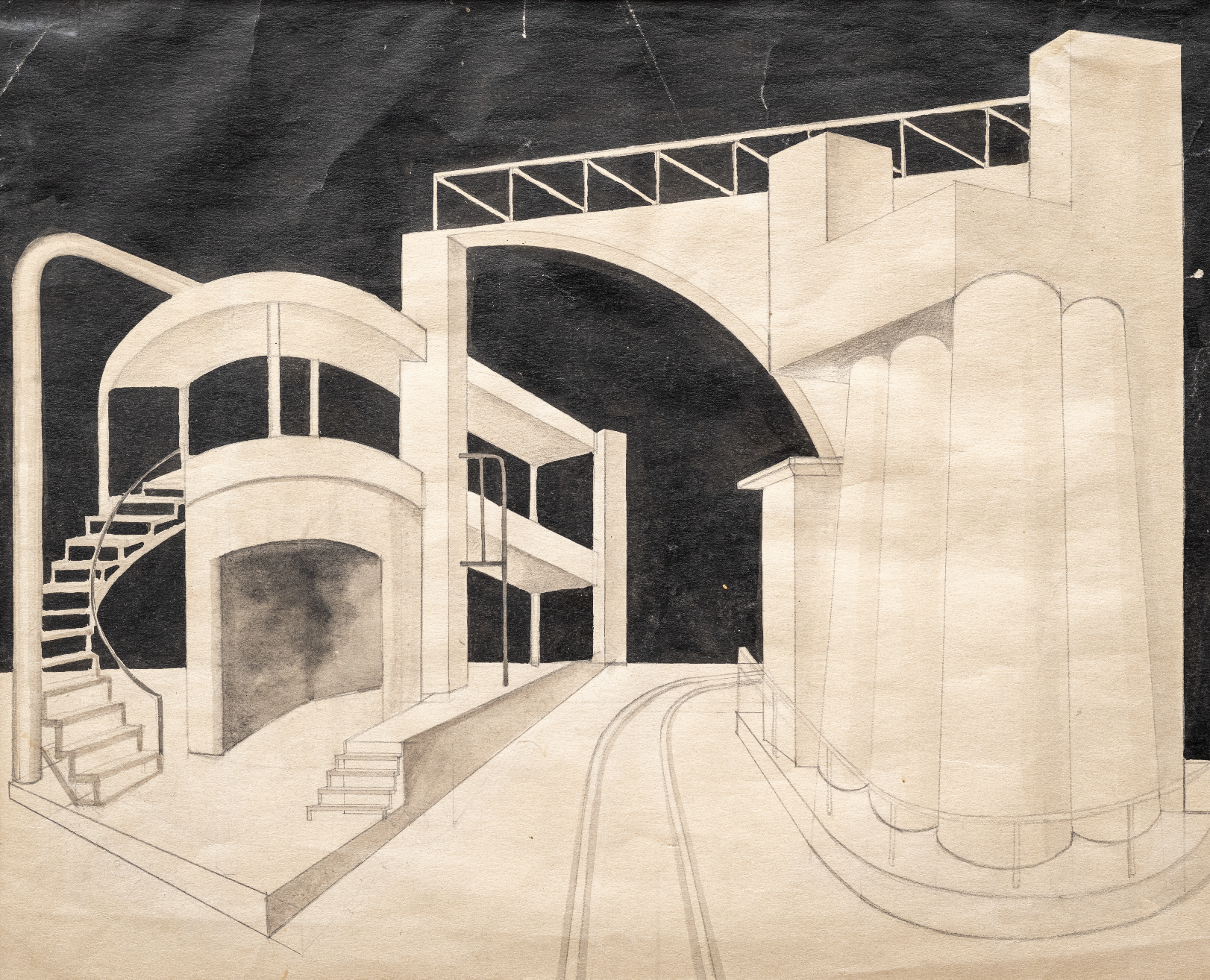
Irakli Gamrekeli. Stage design for “The Fault” by Boris Lavrenyov, 1928. Sh. Rustaveli Theatre, director Sandro Akhmeteli. Watercolor and pencil on paper. 41x48. Sh. Rustaveli Theatre Museum
Furthermore, the generalized spaces he created responded to the vision of the director, seeing the stage equipment he designed providing a foundation for the actors to convey the director's vision not only through dialogue, but also through physical movement and rhythmic interaction.
Gamrekeli's sketches, surviving photos of stage scenes, and limited film footage illustrate how the artist supported directors and actors to achieve their creative goals. This is particularly evident in performances such as ‘Hamlet’ (1925), ‘Zagmuk‘ (1926), ‘Anzor’ (1928), ‘Lamara‘ (1930), ‘The Robbers’ (1933) and others staged at the Rustaveli Theater. Sketches and models from these productions demonstrate that Gamrekeli was a laconic and symbolically-minded sculptor.
Among Gamrekeli's most renowned works, featured in numerous foreign publications, are his sketches for the unrealized play ‘Mystery-Buff’ by Mayakovsky (1924). Marjanishvili intended to stage the play on the slopes of Mtatsminda, which was probably the most ambitious project of its time, and yet it remained unrealized due to insufficient funds. Nonetheless, Gamrekeli's dynamic and bold sketches continue to stand as artifacts of that modernist era.
Known primarily as a theater artist, over several decades, Gamrekeli designed the sets for dozens of plays. He also created a dynamic modernist set design for the silent film ‘My Grandma’ (directed by Kote Mikaberidze, 1929), which criticized the Soviet bureaucracy and was banned by the Soviet censors for decades.
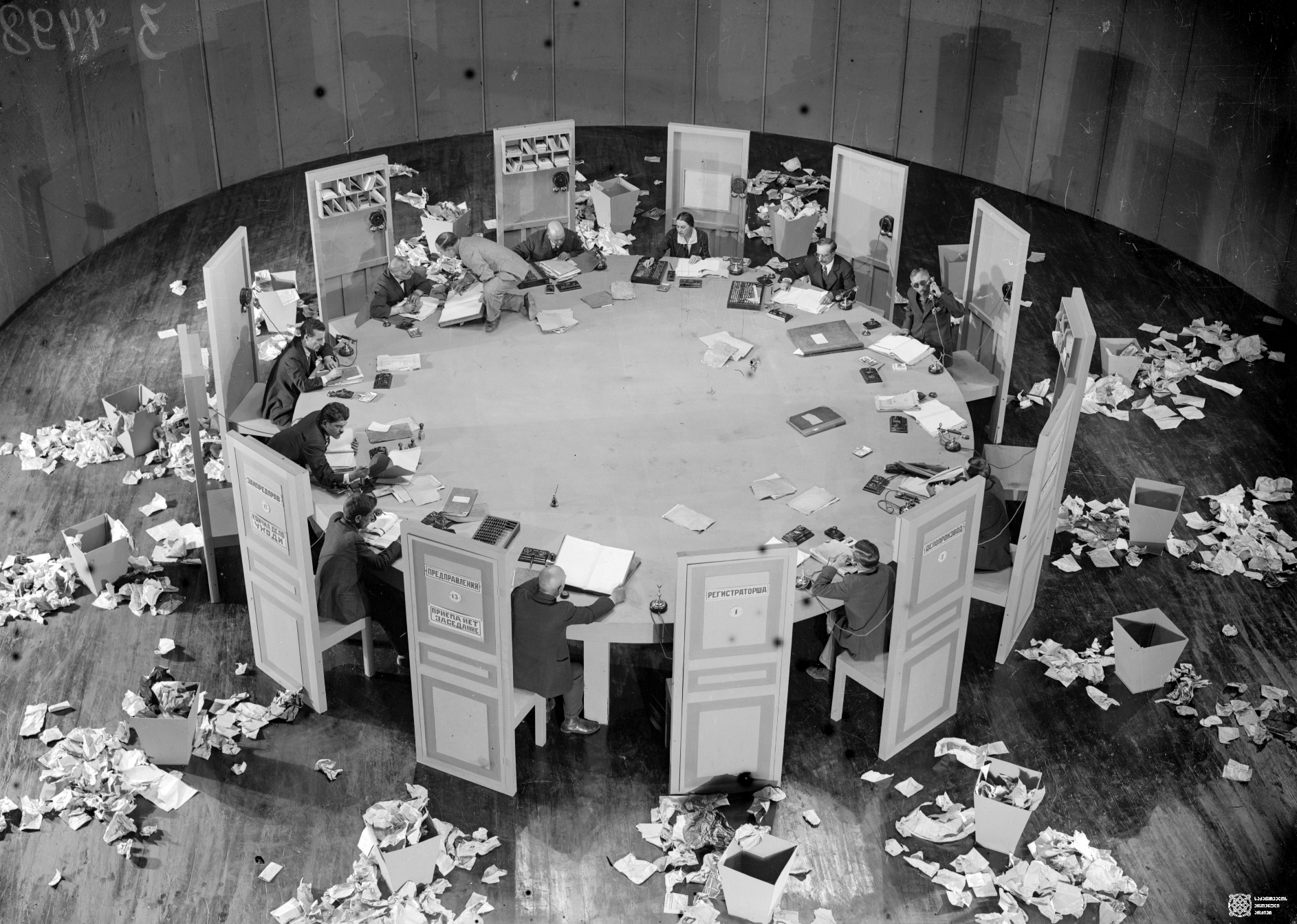
Irakli Gamrekeli. Set design for the film “My Grandmother”, 1929. Director Kote Mikaberidze
Equally significant is Gamrekeli's legacy in graphic design. He was a member of the association of futurist poets and artists ‘H2SO4,’ and contributed as an artist to the magazine of the same name (alongside Beno Gordesian, 1924). In addition, he illustrated many other books and magazines, where his avant-garde vision was revealed. Today, these publications are of particular interest, primarily due to their design and artistic content.
In the second half of the 1930s, there appeared a need to consider the method of socialist realism in theater as well. It is a common occurrence that, in an attempt to bring the stage setting closer to reality, some "corrections" are occasionally incorporated into the artistic solutions of previously staged performances. For example, in one of the scenes of "Robbers," the root of a tree on the stage set by Irakli Gamrekeli was covered with leaves. In general, Irakli Gamrekeli's costumes and decorations took on a more "narrative" quality during this time, losing their conditional-constructivist character.

Irakli Gamrekeli. Stage design for “The Robbers” by Friedrich Schiller. 1933. Sh. Rustaveli Theatre, directors Sandro Akhmeteli & Shalva Aghsabadze. Gouache and pencil on paper. 50x35.5. Sh. Rustaveli Theatre Museum
‘The Circus and I’ by Irakli Gamrekeli, better known today as a black-and-white reproduction from the magazine H2SO4, is actually an oil painting on canvas (1923). As the title suggests, it is also Gamrekeli's self-portrait. In the composition, with fragments of the circus arena presented at different scales, silhouettes of the actors, rays of light, and chaos, Gamrekeli's profile is outlined. His direct gaze reveals how he stood out firmly in the diverse, dynamic, and expressive environment characteristic of the modernist era. This environment required a highly qualified, flexible, and precise hand; one capable of combining multiple sources or foundations into a single body, and thought and shape into a unified whole.
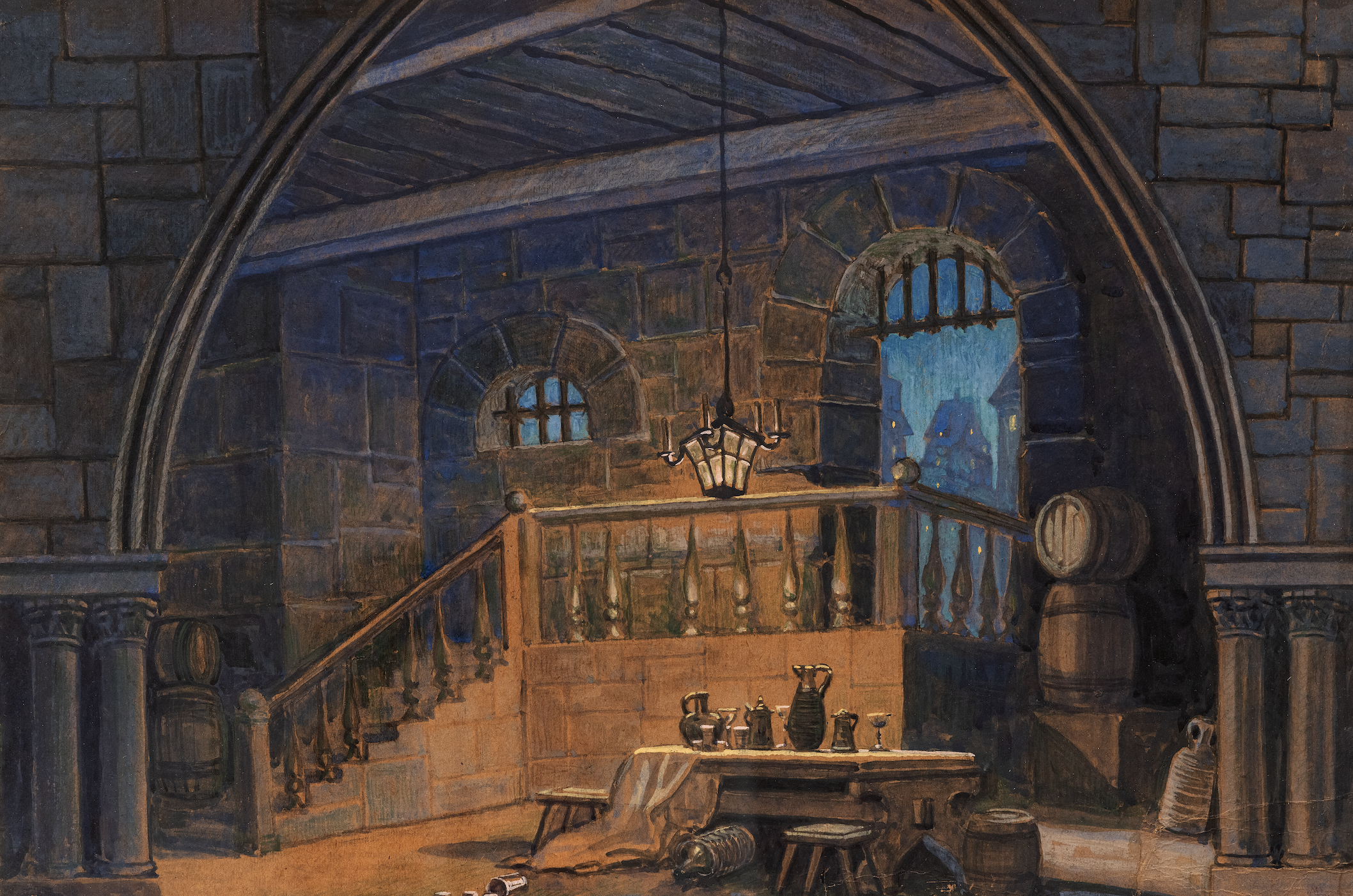
Irakli Gamrekeli. Stage design for “Flanders” by Victorien Sardou, 1941. Sh. Rustaveli Theatre, director Shalva Aghsabadze. Pencil and gouache on paper. 50x74. This work is part of ATINATI Private Collection

Irakli Gamrekeli. Stage design for an unknown performance, 1935-1943. Gouache and pencil on paper, 32.5x32. This work is part of ATINATI Private Collection

Irakli Gamrekeli. Costume design for “Lado Ketskhoveli” by Grigol Kiladze. 1941. Z. Paliashvili Opera and Ballet Theatre, director Shalva Aghsabadze. Gouache on paper glued to cardboard, 34.3x15.5. This work is part of ATINATI Private Collection
Irakli Gamrekeli passed away in 1943 at the age of 49. Until the end of his life, he remained the chief artist of the Rustaveli Drama Theater. During that time, he created the logo of the theater, which succinctly and precisely reflected the aspirations and artistic essence of the Theater of the 1920s-30s.